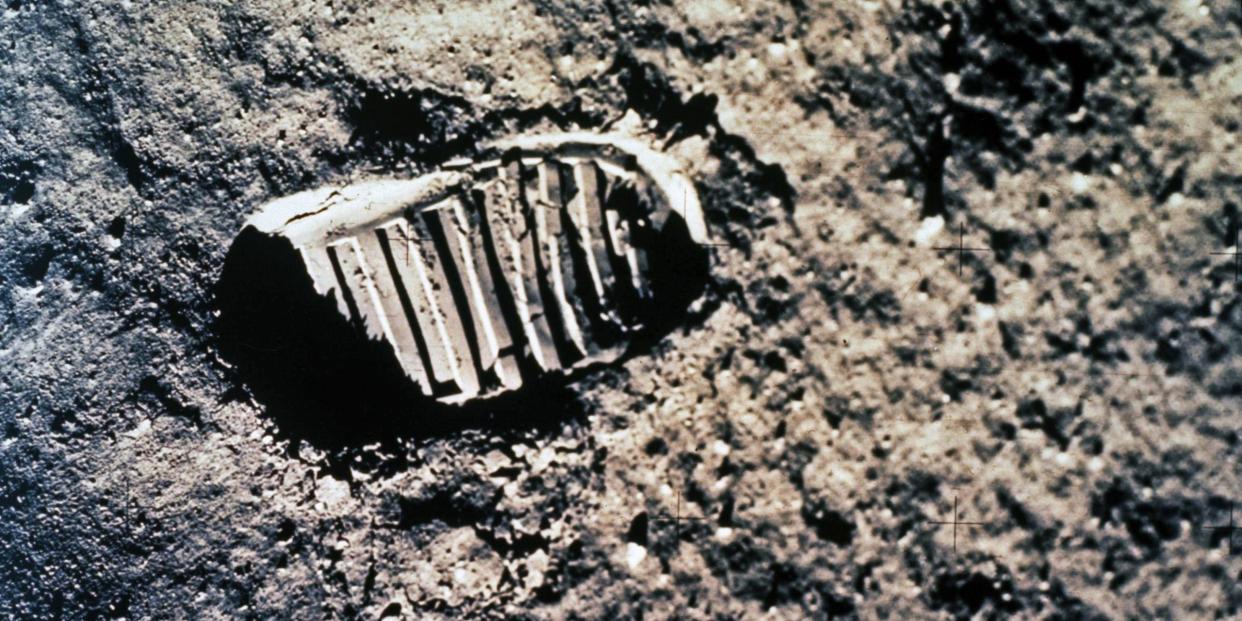Beyond the Moon: The Planned Apollo Missions That Could Have Been

Since Gene Cernan stepped back into the Apollo 17 lander in 1972, no human being has set foot on the moon again. On the windless lunar world, the Apollo astronauts' footsteps still remain, waiting for future explorers and archaeologists.
Despite its successes, the Apollo program is more popular in hindsight than it was at the time, and even seeing it through to Apollo 17 was fortunate for NASA. Congress cut the budget for missions beyond 17 in 1969. Essentially before the first landing had taken place, the program was already doomed.
Of course, 48 years later, the Apollo 11 landing remains one of the greatest accomplishments in human history. To celebrate the monumental achievement, let's take a look at what might have been if the Apollo program continued on.
Apollo 18, 19, and 20
Apollo 18, 19, and 20 were already in the planning stages when funding for the program was cut. The most likely landing sites would have been Copernicus crater, Hadley Rille, and Tycho crater. Harrison Schmitt, the second-to-last man on the moon, even tried to push NASA toward a far side of the moon landing, which the agency thought was too risky.
All three missions would have involved utilizing the rover modules on three day stays to further exploration of the moon. The discussed craters are all fairly large, though at one point there was discussion of visiting a smaller crater-Hyginus-that appears to be volcanic in origin.
Apollo 20 had perhaps the most tantalizing mission bit. Had it landed in Tycho crater, it would have been able to rendezvous with the Surveyor 7 lander. It also would have been the highest altitude landing site, which gave some within the agency pause over the risk.
Mars and Venus?
Early drafts of the Apollo missions included a plan to perform a figure eight around Venus, out to Mars, back to Venus, and finally back to Earth. All would have been flybys, using Apollo-era hardware. The mission would have deployed robotic landers on each planet during its year-and-a-half mission, which would have used a rare planetary alignment to do low-power transfers between each object.
It could have been an engineering wonder of basic physics. Venus takes less energy to get to than Mars, so traveling to Venus first could have given the craft enough energy to fly just 1200 miles over the cloud tops, drop a lander, and slingshot over to Mars. A similar gravitational effect would enable the craft to return to Venus, with the gravity of our sister planet then setting a trajectory back to Earth.
Such a flight would have been an enormously ambitious undertaking, and indeed the mission left the drawing board. Still, there were discussions in the original Apollo draft of several such flybys. The timetable would likely have placed such a mission in 1981, at which point hardware might have advanced to the point that the flight was feasible.
The figure eight plan, in the end, never received serious consideration. But Mars was definitely on NASA's mind. While working on Apollo hardware, the space agency was also thinking about the next steps to a crewed landing on Mars. In 1961, several NASA contractors began working on the NERVA motor, a rocket that would use nuclear propulsion to launch to Mars quickly.
So how would Apollo hardware have factored in? Quite literally, we would have assembled the Mars vessel in orbit, one piece at a time. Apollo crew modules would launch aboard Saturn 1Bs, carrying the parts to assemble a Mars rocket in space.
Unlike the Venus-Mars-Venus concept, this one called for a full lander. Nuclear propulsion would enable a low-fuel slowdown on arrival at Mars, bringing the crew into orbit. Two astronauts would then detach from the main craft in a lander and spend four days on the Red Planet before returning up to rendezvous with the main craft and fly back to Earth.
Venus flyby options were explored in the mission concept as well, which had a window of 1978 to 1991. But NERVA was cancelled in 1972, killing the audacious follow-on missions to Apollo.
The Apollo Legacy
Several other missions involving Apollo hardware were planned, including further iterations of Skylab, the United States' first space station. None would have left Earth orbit, however. Eventually, the agency turned their focus to Space Station Freedom, a space station concept that ultimately folded into the ISS. While the agency had a space-capable vessel in the Space Shuttle, it was never designed to go beyond low-Earth orbit.
There are plenty of modern proposals for crewed moon missions, but all of them would follow in the shadow of Apollo. Even future space exploration missions will be covering ground the Apollo program might have covered-had it not been given its termination notice so soon after it was just ramping up.
You Might Also Like

